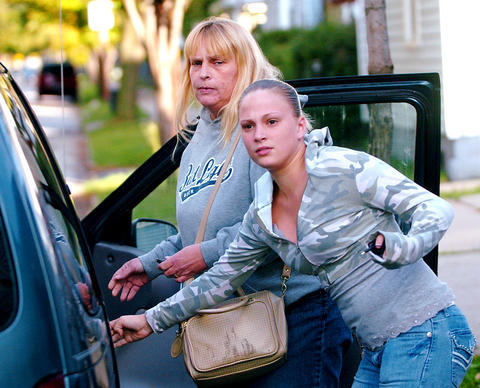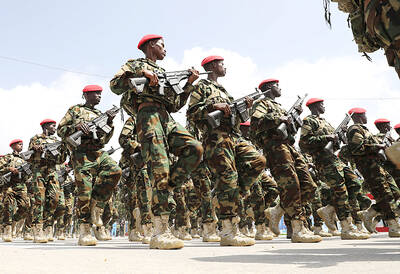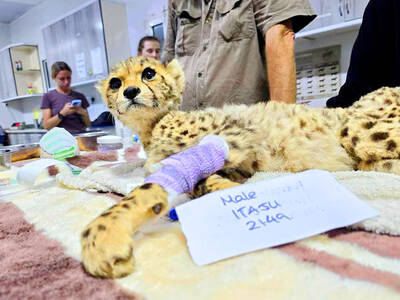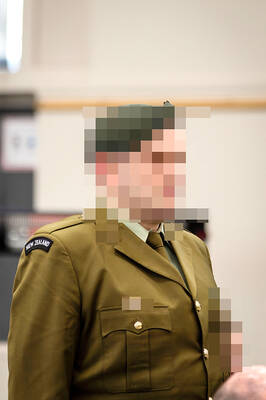Despite 26 security cameras, officials could not say how an armed, suspended 14-year-old student was able to get into his downtown school a day earlier and shoot two students and two teachers before killing himself.
School officials also were investigating how a number of warning signs from the troubled student, including threats made last week, apparently went unheeded.
Police were checking surveillance video on Thursday for clues as to how Asa Coon, armed with two revolvers, was able to enter the SuccessTech Academy alternative school.

PHOTO: AP
Coon was a new student at the school, but the district has a dossier on past problems. He had mental health problems, spent time in two juvenile facilities and was suspended from school last year for attempting to harm a student, juvenile court records show.
Coon had been suspended for a fight on Monday, but students said officials had done nothing about threats he had made last week to blow up the school and stab students.
"I told my friends in the class that he had a gun and stuff," Rasheem Smith, 15, said on Thursday on CBS's Early Show. "We talked to the principal. She would try to get us all in the office, but it would always be too busy for it to happen."
Responding on the show, schools chief executive Eugene Sanders said the district would investigate.
The school of about 240 students has metal detectors, but none were operating on Wednesday. Students said the devices were used only intermittently.
When asked how Coon got past an armed security guard or whether warnings signs were missed, Police Chief Michael McGrath said he could not comment. He said police consult with school officials on where to locate metal detectors, based in part on crime in schools.
Charles Blackwell, president of SuccessTech's student-parent organization, said the position of a second security guard had been eliminated because of lack of money.
Wearing black clothing, black-painted fingernails and a T-shirt of Marilyn Manson -- the shock rocker he said he chose to worship instead of God -- Coon fired as students ran screaming or hid under tables or in closets. Then the freshman shot himself behind his right ear with a .38 caliber shot shell loaded with pellets.
Near Coon's body, police found the two guns -- .22- and .38 caliber revolvers -- and a box of ammunition for each, as well as three folding knives, McGrath said.
McGrath said that since last year, police had gone to the family's home five times: for calls about domestic violence, an assault call, a property crime and a hit-and-run accident.
Asa Coon, who is white, stood out in a school that is 85 percent black for wearing a black trench coat, black boots, a dog collar, chains and a glove. No one has suggested race played a role in the attack.
Coon was the subject of a juvenile court neglect case at age four, came from a poor home and routinely showed up to school unkempt.
When he was 12, Coon was charged in juvenile court with domestic violence, accused of attacking his mother.
His probation officer described the relationship between Coon and his mother as extremely poor, with both using foul and abusive language toward each other.

ELECTION DISTRACTION? When attention shifted away from the fight against the militants to politics, losses and setbacks in the battlefield increased, an analyst said Recent clashes in Somalia’s semi-autonomous Jubaland region are alarming experts, exposing cracks in the country’s federal system and creating an opening for militant group al-Shabaab to gain ground. Following years of conflict, Somalia is a loose federation of five semi-autonomous member states — Puntland, Jubaland, Galmudug, Hirshabelle and South West — that maintain often fractious relations with the central government in the capital, Mogadishu. However, ahead of elections next year, Somalia has sought to assert control over its member states, which security analysts said has created gaps for al-Shabaab infiltration. Last week, two Somalian soldiers were killed in clashes between pro-government forces and

Ten cheetah cubs held in captivity since birth and destined for international wildlife trade markets have been rescued in Somaliland, a breakaway region of Somalia. They were all in stable condition despite all of them having been undernourished and limping due to being tied in captivity for months, said Laurie Marker, founder of the Cheetah Conservation Fund, which is caring for the cubs. One eight-month-old cub was unable to walk after been tied up for six months, while a five-month-old was “very malnourished [a bag of bones], with sores all over her body and full of botfly maggots which are under the

BRUSHED OFF: An ambassador to Australia previously said that Beijing does not see a reason to apologize for its naval exercises and military maneuvers in international areas China set off alarm bells in New Zealand when it dispatched powerful warships on unprecedented missions in the South Pacific without explanation, military documents showed. Beijing has spent years expanding its reach in the southern Pacific Ocean, courting island nations with new hospitals, freshly paved roads and generous offers of climate aid. However, these diplomatic efforts have increasingly been accompanied by more overt displays of military power. Three Chinese warships sailed the Tasman Sea between Australia and New Zealand in February, the first time such a task group had been sighted in those waters. “We have never seen vessels with this capability

‘NO INTEGRITY’: The chief judge expressed concern over how the sentence would be perceived given that military detention is believed to be easier than civilian prison A military court yesterday sentenced a New Zealand soldier to two years’ detention for attempting to spy for a foreign power. The soldier, whose name has been suppressed, admitted to attempted espionage, accessing a computer system for a dishonest purpose and knowingly possessing an objectionable publication. He was ordered into military detention at Burnham Military Camp near Christchurch and would be dismissed from the New Zealand Defence Force at the end of his sentence. His admission and its acceptance by the court marked the first spying conviction in New Zealand’s history. The soldier would be paid at half his previous rate until his dismissal